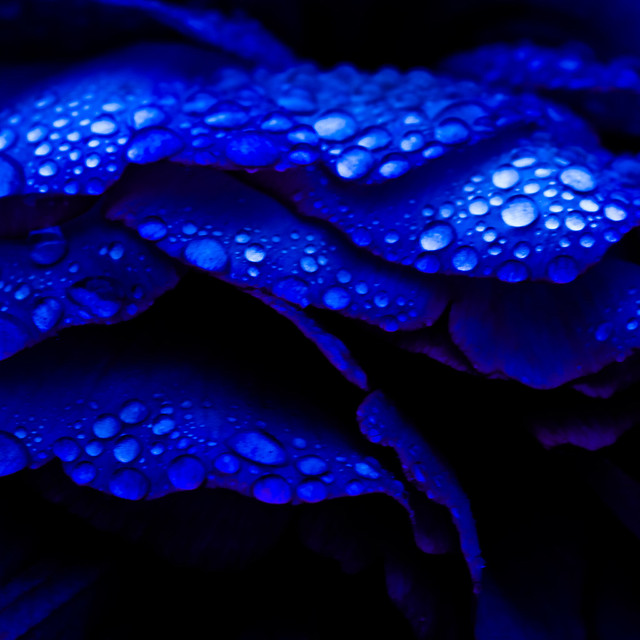
Blue
The modern English word blue comes from the Middle English, bleu or blwe, which came from an Old French word bleu of Germanic origin (Frankish or possibly Old High German blao, "shining"). Bleu replaced Old English blaw. The root of these variations was the Proto-Germanic bl? waz, which was also the root of the Old Norse word bla and the modern Icelandic blar, and the Scandinavian word bla, but it can refer to other colours. A Scots and Scottish English word for "blue-grey" is blae, from the Middle English bla ("dark blue," from the Old English bl? d). Ancient Greek lacked a word for colour blue and Homer called the colour of the sea "wine dark", except that the word kyanos (cyan) was used for dark blue enamel.
As a curiosity, blue is thought to be cognate with blond, blank and black through the Germanic word. Through a Proto-Indo-European root, it is also linked with Latin flavus ("yellow"), with Greek phalos (white), French blanc (white, blank) (loaned from Old Frankish), and with Russian белый, belyi ("white"), and Welsh blawr (grey) all of which derive (according to the American Heritage Dictionary) from the Proto-Indo-European root bhel - meaning "to shine, flash or burn", (more specifically the word bhle-was, which meant light coloured, blue, blond, or yellow), whence came the names of various bright colours, and that of colour black from a derivation meaning "burnt" (other words derived from the root bhel - include bleach, bleak, blind, blink, blank, blush, blaze, flame, fulminate, flagrant and phlegm).
In the English language, blue may refer to the feeling of sadness. "He was feeling blue". This is because blue was related to rain, or storms, and in Greek mythology, the god Zeus would make rain when he was sad (crying), and a storm when he was angry. Kyanos was a name used in Ancient Greek to refer to dark blue tile (in English it means blue-green or cyan).
Many languages do not have separate terms for blue and or green, instead using a cover term for both (when the issue is discussed in linguistics, this cover term is sometimes called grue in English). Blue is commonly used on internet browsers to colour a link that has not been clicked; when a link has been clicked it changes yellow or orange or purple.
(Taken from Wikipedia)